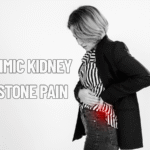Ever determined your self-careworn gazing a listing of codes at some stage in a go to the medical doctor in your again ache? You`re now no longer alone. The back pain icd 10 class gadget would possibly appear overwhelming at first. However, it performs an essential position in making sure of correct diagnosis, remedy, and billing.
In this guide, we’ll destroy down what the every back pain ICD 10 code means—inclusive of associated phrases like higher back pain ICD 10, low back pain ICD 10, or even greater unique ones like continual low back pain ICD 10 and mid back pain ICD 10—to assist each healthcare experts and sufferers higher navigate this important thing of scientific care.
What Is ICD 10, and Why Does It Matter?
The International Classification of Diseases, tenth Revision (ICD-10), is a globally identified coding gadget advanced through the World Health Organization. It’s used to categorize and document diseases, symptoms, and different fitness situations in a standardized format. You can explore the WHO ICD-10 Reference for official definitions and updates.
-
Why it is important:
-
Ensures correct billing and coverage claims.
-
Facilitates right monitoring of fitness statistics.
-
Aids in medical studies and public fitness reporting.
-
For example, in preference to just saying “again ache,” medical doctors use an ICD-10 code to specify whether or not it’s inside the higher, middle, or decrease again, and whether or not it’s acute or continual.
Back Pain ICD 10 Codes: A Breakdown

Let’s discover the principal ICD 10 codes for distinct varieties of againache and their packages in real-international medical settings.
1. M54.5 – Low Back Pain ICD 10
This is the most typically used code for low back pain. It’s a widespread diagnosis, frequently used while the decrease again is painful without an honestly described underlying condition.
Used for:
-
Nonspecific decrease again ache
-
Acute or subacute lumbar ache
Not used for: -
Chronic situations (see next)
2. M54.50 – Chronic Low Back Pain ICD 10
When the pain lasts more than 12 weeks, it’s categorized as a continual low pain. Note: The term “continual” differentiates it from critical conditions
3. M54.6 – Thoracic Back Pain / Upper Back Pain ICD 10
This code refers to aches inside the thoracic spine, additionally referred to as upper back pain. It’s a much less unusual place than Lumbar Troubles, however; nonetheless, it’s giant.
Common reasons include:
-
Poor posture
-
Muscular strain
-
Disc degeneration in thoracic vertebrae
4. M54.89 – Mid Back Pain ICD 10 / Middle Back Pain ICD 10
Although the ICD-10 no longer lists “mid-again ache,” M54.89 (“Other dorsalgia”) is generally used for unspecified again aches now no longer localized to the cervical, thoracic, or lumbar regions.
When to apply it:
-
Pain inside the mid-dorsal area
-
Discomfort that doesn’t honestly fall into cervical or lumbar categories
5. M54.81 – ICD 10 Intractable Back Pain
This code suggests an intractable ache, which means the ache is tough or not possible to manipulate, regardless of treatments. This has giant implications for remedy-making plans and coverage approval.
Often connected with:
-
Failed again surgery
-
Nerve damage
-
Complex continual ache syndromes
Quick-Reference Table for Back Pain ICD 10 Codes
| Pain Location/Type | ICD-10 Code | Description |
| Low Back Pain | M54.5 | General nonspecific lumbar pain |
| Chronic Low Back Pain | M54.50 | Low back pain > 12 weeks duration |
| Thoracic / Upper Back Pain | M54.6 | Pain in thoracic spine |
| Mid Back / Middle Back Pain | M54.89 | Other dorsalgia (unspecified region) |
| Intractable Back Pain | M54.81 | Severe, treatment-resistant pain |
The Real-World Impact of Correct Coding
Accurate ICD 10 coding for back pain isn’t pretty much paperwork—it, without delay, affects affected person outcomes, clinical billing, and coverage processing. Here’s how:
-
Fewer Insurance Denials
Using the correct ICD 10 code reduces declared rejections, delays, and appeals. -
Better Patient Management
Chronic ache coding facilitates clinicians’ long-term remedy and rehabilitation progress. -
Supports Research & Public Health
Epidemiologists and researchers use ICD-10 facts to evaluate tendencies in musculoskeletal fitness and lay out higher interventions.
Common Challenges in Back Pain ICD 10 Coding
While the gadget is robust, it isn’t foolproof. Here are a number of the troubles clinical coders face:
-
Overlapping Symptoms: Mid and again aches can be difficult to differentiate.
-
Documentation Gaps: Incomplete health practitioner notes can cause faulty coding.
-
Misuse of Chronic Pain Codes: Chronic Pain have to be shown with a timeline—now no longer assumed.
Tips for Accurate Coding

Whether you’re a clinical coder or a provider:
-
Always report length and vicinity clearly.
-
Use imaging or affected person-pronounced signs to assist code selection.
-
Avoid the usage of unspecified codes like M54.nine except truly necessary.
A Patient’s Perspective: Why Should You Care?
From an affected person’s side, expertise back pain ICD 10 codes can:
-
Help make certain your remedy is protected via way of means of coverage.
-
Give you self-belief for your care plan.
-
Make you a more knowledgeable player for your very own fitness journey.
Example: Knowing that your chronic again ache is classed as a continual low back pain ought to open entry to ache control applications. Your coverage could, in any other case, be denied.
Integrating ICD 10 Codes into Digital Health Records
With the upward thrust of digital fitness records (EHRs), correct ICD coding is even more essential. A wrongly entered code can end up resulting in the following:
-
Mismatched prescriptions
-
Inaccurate referrals
-
Denied claims
Ensure your EHR gadget pulls from the cutting-edge ICD-10 database and teaches all personnel in its use.
Final Thoughts on Back Pain ICD 10 Codes
Backache can be one of the maximum not unusual place proceedings in clinics; however, handling it begins offevolved with the accurate diagnosis—which means accurate coding.
From upper back pain to intractable back pain, every code tells a tale of an affected person’s fitness journey. Understanding them can assist vendors in supplying higher care, and sufferers acquire it with clarity.
Found this manual useful? Share it with a colleague or bookmark it for Destiny’s reference. Want to realize how those codes tie into unique remedy techniques or coverage coverage? Explore greater on our weblog or join our e-newsletter for professional breakdowns and sensible tips. For more information visit this website: Healthzone
FAQs
1. What is the ICD 10 code for widespread lower back aches?
Use M54.nine for unspecified lower back aches; however, try and select greater unique codes like M54.five for low lower back aches or M54.6 for top lower back aches on every occasion possible.
2. How do I recognize if my lower back ache qualifies as continual below ICD 10?
If your ache lasts 12 weeks or longer, classify it as a continual lower back ache with the usage of M54.50. Make certain to actually report this time frame on your medical record.
3. Is there a separate ICD 10 code for mid-lower back or middle-lower back aches?
ICD 10 doesn’t assign a devoted code for “mid-lower back ache.” Instead, use M54.89 (“Other dorsalgia”) for aches that don`t suit cervical, thoracic, or lumbar categories.
4. What is the ICD 10 code for intractable lower back aches?
Use M54.eighty one to suggest intractable lower back ache, which resists remedy and appreciably impacts everyday life.
5. Can I use the equal code for the top lower back ache and thoracic ache?
Yes, code each top lower back ache and thoracic lower back ache below M54.6 for the reason that the thoracic backbone makes up the top lower back.




